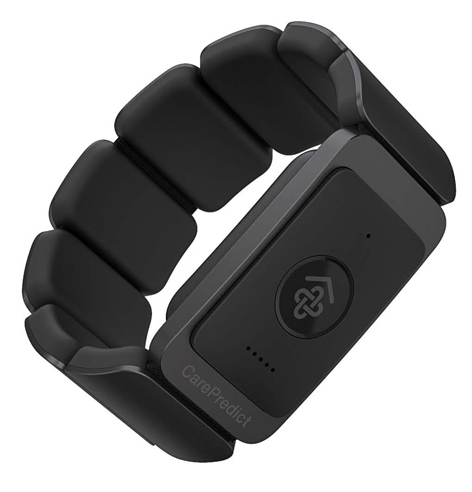 CarePredict — a Fort Lauderdale, Florida-based company that sells a senior monitoring platform comprised of networked wearables and data-driven diagnosis prediction — has announced that will be deploying its system in LifeWell Senior Living’s newly established aging and memory care facility in Santa Fe, New Mexico, The Legacy. This will be the third LifeWell facility in which the CarePredict Tempo system will be used to track residents’ behaviors and alert caretakers to potential declines or emergencies.
CarePredict — a Fort Lauderdale, Florida-based company that sells a senior monitoring platform comprised of networked wearables and data-driven diagnosis prediction — has announced that will be deploying its system in LifeWell Senior Living’s newly established aging and memory care facility in Santa Fe, New Mexico, The Legacy. This will be the third LifeWell facility in which the CarePredict Tempo system will be used to track residents’ behaviors and alert caretakers to potential declines or emergencies.
Currently, direct observation is needed to identify evidence of a senior’s declining condition before a clinical diagnosis can be made, Satish Movva, CEO and founder of CarePredict, explained. By outfitting seniors with one of CarePredict’s behavior-monitoring wearables, the system’s AI acts as an automated pair of eyes and can use its observations to predict issues before they arise.
“What we are doing is we are supplanting that human observation with machine observation, and using predictive learning models with our deep-learning tech to detect things like depression,” Movva told MobiHealthNews. “We don’t diagnose depression, we tell you where the precursors of depression might be present … We tell them what’s going on, and we let the human intelligence connect the dots to make the diagnosis.”
The warning signs of depression, malnutrition, urinary infection, an upcoming fall, and other assisted care concerns are largely behavioral, he continued. By continuously monitoring whether a wearer is normally bathing, sleeping, dressing, using the bathroom, socializing, or conducting other behaviors, Movva said that his predictive system can effectively predict upcoming care issues.
“Everybody else is kind of looking at the physiological measurements, heart rates and things like that,” Movva said. “While those have a lot of value, we found, through the existing research that’s out there, that changes in activity and behavior patterns are a better cue to declines in health, and typically they have always been human-observable."
The wearable monitors also contain an emergency alert button in case of a fall, as well as a continuous location monitor that can notify caretakers if the wearer is wandering. The latter can also serve facility managers as a way to conveniently monitor caretaker deployment and activity, Movva added.
Including these functionalities allows CarePredict’s wearable to replace the standard bulky alert buttons and other basic devices that many facilities have implemented in the past few years. The Tempo devices have also been better received by seniors than their predecessors, an achievement that Movva said can be largely attributed to conversations with facility residents during the design process.
“We absolutely got an earful that the existing types of these white-beige buttons that people wear around the necks, and these big, gigantic, polyurethane, nylon-type wristwatch things that people put on — they found them actually dehumanizing and stigmatizing to wear those, and that’s one of the reasons they have such poor adoption,” he said. “What we learned was that they preferred it to look like a piece of jewelry [and] that’s how we designed our product, as a module that slips into a piece of jewelry… that allowed the issue of ‘this device looks ugly’ to be overcome.”
Movva said that he originally designed CarePredict’s platform with in-home monitoring in mind, but so far has targeted business-to-business rollouts as the company scales. However, he still hopes to implement a direct-to-consumer model in the future, and hinted that pilots providing the system to home care services have shown early promise.
CarePredict was founded in 2013 and raised a total of roughly $5 million across three funding rounds in 2015 and 2016, according to SEC filings. Earlier this year, the company raised an undisclosed sum in another funding round led by Las Olas Venture Capital.














